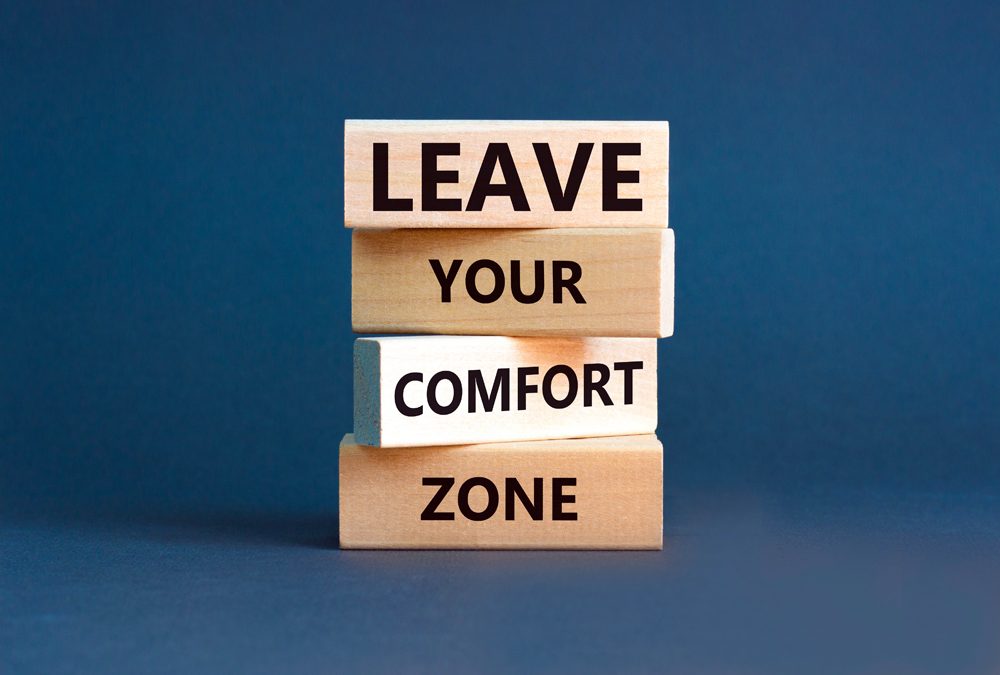“If you are in your comfort zone, you are not growing.”
“Do something every day that makes you uncomfortable.”
“If you are not doing anything that makes you uncomfortable, you are not growing.”
These aren’t just motivational one-liners—they’re a call to action for anyone serious about leveling up in their professional life.
It’s easy to fall into the rhythm of what’s safe and familiar: routines that don’t challenge us, roles that don’t stretch us, and patterns that don’t inspire us. But here’s the hard truth: if you’re not uncomfortable, you’re probably not growing. And if you’re not growing, you’re stagnating—no matter how busy or productive you feel.
The magic, the momentum, and the massive career breakthroughs? They’re all on the other side of discomfort.
Let’s explore what this means, why it’s so difficult, and how you can start building discomfort into your daily work life—on purpose.
The Comfort Zone: A Career Trap in Disguise
Let’s define it first. Your comfort zone is that mental space where your activities and behaviors fit a pattern and routine that minimizes risk, reduces stress, and feels safe. There’s nothing inherently wrong with it. We need periods of stability.
But stay there too long, and it becomes a trap.
In your comfort zone, you might:
- Stay in a job where you’re no longer challenged
- Avoid speaking up in meetings
- Keep applying to roles that feel “safe” instead of stretching
- Keep doing tasks you’ve already mastered instead of learning new ones
- Say no to opportunities that require visibility, vulnerability, or failure
You may feel competent—but not alive. Productive—but not fulfilled. Employed—but not evolving.
Comfort often masquerades as success. But over time, it leads to stagnation, boredom, and even burnout. Why? Because deep down, we want to grow. We’re wired for it.
Discomfort: The Real Indicator of Progress
Here’s the good news: discomfort isn’t a sign you’re doing something wrong. It’s a signal you’re doing something right.
When you feel nervous, uncertain, stretched, or even slightly afraid, you’re probably on the edge of something important.
That moment you:
- Say “yes” to a stretch project even though you doubt your abilities
- Post your first thought leadership piece online
- Lead a meeting for the first time
- Interview for a role you feel unqualified for
- Ask for feedback from someone you respect
. . . that’s when you grow.
Because discomfort means you’re out of the known. Out of the predictable. Out of the auto-pilot version of your career. And into the real work of learning, expanding, and leveling up.
Why We Avoid Discomfort—And Why That’s Dangerous
Let’s be honest: discomfort sucks. At first, anyway.
It brings up fear, self-doubt, and resistance. Your brain literally perceives it as a threat. “This is risky,” it says. “Play it safe.” But safety is not the same as success. We avoid discomfort because:
- We don’t want to look stupid
- We fear failure or embarrassment
- We worry we’re not good enough
- We want to be liked
- We’ve been conditioned to believe that mastery = comfort
But here’s the truth: Growth and comfort cannot coexist.
If you only do what you’re already good at, you’ll never discover what you could be great at.
The Power of Doing Uncomfortable Things—Daily
The key is not to take one big scary leap once in a while. It’s to build the muscle of discomfort daily—like going to the gym.
That’s why the advice “do something every day that makes you uncomfortable” is so powerful. It doesn’t mean you need to blow up your life. It means you make stretch a habit.
Some examples:
- Speak up in a meeting where you’d normally stay quiet.
- Ask for feedback even if it makes you squirm.
- Apply for a role that’s a reach.
- Reach out to a connection you admire but are intimidated by.
- Write a post and share your ideas publicly.
- Volunteer for a project outside your area of expertise.
- Set a boundary or advocate for yourself.
These micro-moments of discomfort build confidence, resilience, and momentum.
And here’s the paradox: the more you do uncomfortable things, the more comfortable you become with being uncomfortable. That’s how you grow fast.
Discomfort Is the Path to Mastery
People often assume that growth means moving from discomfort to comfort. But in reality, mastery means becoming more skilled at handling discomfort—not avoiding it.
Top performers in every field—athletes, executives, creatives, entrepreneurs—train their tolerance for discomfort. They practice:
- Receiving criticism
- Navigating uncertainty
- Making decisions without perfect information
- Taking calculated risks
- Bouncing back after failure
These aren’t pleasant things. But they’re necessary.
Want to increase your success rate? Don’t wait for comfort. Do more uncomfortable things.
The more discomfort you can tolerate, the more growth, impact, and opportunity you unlock.
The Discomfort-Growth Feedback Loop
Here’s how it works:
- You choose something uncomfortable.
- You do it anyway.
- You survive. (Often thrive.)
- You build confidence.
- Your comfort zone expands.
- You seek out the next stretch.
- You grow again.
This is a loop. Every time you lean into discomfort, you reinforce the belief that you can handle hard things. And every time you avoid it, you reinforce the belief that you can’t.
Want to change your trajectory? Start with small acts of bravery.
Comfort Zone, Stretch Zone, Panic Zone
It’s important to note: Not all discomfort is productive. Think of three zones:
- Comfort Zone – Feels safe, but leads to stagnation.
- Stretch Zone – Feels challenging, but leads to growth.
- Panic Zone – Feels overwhelming, and leads to shutdown.
The goal is to spend as much time in your stretch zone as possible. That means:
- A little fear, but not paralyzing
- A little risk, but not recklessness
- Enough challenge to grow, but enough support to succeed
As you expand your stretch zone, your comfort zone grows with it.
What Happens When You Stay Too Comfortable?
Let’s talk about the risk of avoiding discomfort in your professional life. Here’s what it can look like:
- You plateau. You become the go-to person for a specific thing—but you’re not evolving.
- You lose relevance. Industries and tools change. If you’re not learning, you’re falling behind.
- You miss opportunities. Promotions, passion projects, and partnerships often come from taking initiative—not waiting.
- You get resentful. Staying small eventually leads to frustration. You know you’re capable of more.
- You feel unfulfilled. Comfort can’t replace meaning. And meaning comes from challenge.
If any of that sounds familiar, it might be time to ask: What am I avoiding because it’s uncomfortable?
How to Embrace Discomfort and Grow on Purpose
Ready to leave your comfort zone behind? Here’s a roadmap to get started:
1. Identify Your Growth Edge
Ask yourself:
- What am I avoiding because it’s uncomfortable?
- What’s one thing I know would help my career—but I keep putting off?
- Where have I been playing it too safe?
That’s your growth edge. Lean in.
2. Start Small—but Start Now
You don’t need to leap out of a plane. Just take a step:
- Send that email.
- Speak up once.
- Post one idea.
- Volunteer once.
Small acts build momentum.
3. Track Your Discomfort Wins
Make it a game. Each day, note one uncomfortable thing you did. Over time, this builds confidence—and it’s fun to look back and see how far you’ve come.
4. Find Support
You don’t have to do it alone. Surround yourself with mentors, peers, or communities that encourage growth and risk-taking.
Sometimes, just telling someone your stretch goal makes it more real.
5. Reframe Failure
Instead of thinking “What if I fail?” ask:
- What will I learn?
- What strength will I build?
- What if it actually works?
Failure is not the opposite of growth. It’s often the fastest path to it.
Get Comfortable Being Uncomfortable
Discomfort isn’t a bug in your professional journey—it’s a feature.
It’s how you discover your potential. How you differentiate yourself. How you access the next level.
So ask yourself:
- What’s one uncomfortable thing I can do today?
- What’s the cost of staying too comfortable?
- Who could I become if I stretched—just a little—every day?
Because the truth is, your success rate doesn’t improve in spite of discomfort.
It improves because of it.
Growth lives there. So go get it.

